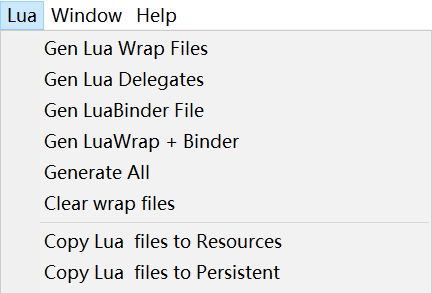UH2S3L3——toLua解析器自定义解析方式
UH2S3L3——toLua解析器自定义解析方式
本章代码关键字
1 | AddSearchPath() //添加解析路径 |
自定义toLua解析路径
我们自己编写的Lua脚本,默认只能找到Assets/Lua文件夹下的,放到其子文件夹下或者其他路径下需要去指定路径
指定解析路径有以下的方式:
-
如果该lua脚本在Assets/Lua文件夹下的文件夹内,则可以加父目录
1
luaState.Require("CSharpCallLua/L2_Loader");
-
使用
LuaState中的方法AddSearchPath()1
2luaState.AddSearchPath(Application.dataPath + "/Lua/CSharpCallLua");
luaState.Require("L2_Loader");
移除指定路径
移除一个搜索路径,很少使用
1 | luaState.RemoveSeachPath(Application.dataPath + "/Lua/CSharpCallLua"); |
自定义toLua解析方式
目前Lua脚本的解析路径是基于Application.dataPath,但是打包后我们不能使用这个路径,而且我们还要去解析AB包中的Lua脚本
这就要求我们自定义toLua解析器的解析方式
分析toLua解析Lua脚本逻辑
通过对Lua解析器的require()断点查看其逻辑的执行,Lua脚本字符串的读取是在LuaFileUtils的ReadFile()方法执行的
而ReadFile()是虚方法,这意味着我们可以继承LuaFileUtils并重写ReadFile()方法,进而自定义toLua的解析方式
1 | namespace LuaInterface |
同时,LuaFileUtils是一个单例模式的类,且LuaFileUtils子类可以修改唯一单例instance
构造函数LuaFileUtils()内执行instance = this,因此如果子类实例化,则LuaFileUtils的唯一单例会被赋值为实例化出来的子类对象
1 | namespace LuaInterface |
从以上分析结果可知,想要自定义toLua的解析方式,
需要继承LuaFileUtils并重写ReadFile()方法,再new一次继承LuaFileUtils的类
接下来toLua解析脚本时就会执行子类里重写的ReadFile()方法
重写的ReadFile()方法需要返回Lua脚本文件的byte[]数组
自定义Lua脚本解析方式
根据以上分析结果,声明一个LuaCustomLoader并继承LuaFileUtils,然后重写ReadFile()方法
对于打包之后的Unity程序,我们需要添加从Resources文件夹和AB包内加载Lua脚本文件的逻辑
我们最好优先从AB包加载Lua脚本,因为AB包用于热更新,而AB包内的Lua脚本往往是会更新的上层逻辑脚本
然后再读取Resources文件夹下Lua脚本,他们一般是toLua自带的Lua脚本或者不需要热更新的脚本
对于Resources和AB包内的Lua脚本,因为读取方法只支持.txt或者.bytes等文件,因此需要在脚本后加上
Resource和AB包的读取方法就需要通过xxx.lua的这种脚本名读取脚本,因此我们还需要提前检测.lua是否加上了
-
快速将Assets/Lua文件夹下的Lua脚本拷贝到Resources下的操作
点击工具栏的Lua - Copy Lua files to Resources选项,会将Lua文件夹下以及toLua自带的文件一并拷贝到Resources文件夹下
同时会添加.bytes后缀名,以便于Resources.Load方法读取
1 | using LuaInterface; |
